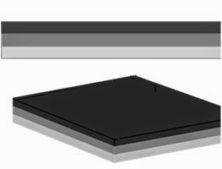Ideally, an initial spectrum supportability risk assessment is generated in the first phase of the DoD acquisition process. Early identification of spectrum and EMC related regulatory and technical issues allows program management personnel to focus attention and resources on critical spectrum issues in the remaining acquisition phases. The SSRA’s author uses inputs from … [Read more...]
Spectrum Supportability Risk Assessments (continued)…
Just One More Thing on the List!Available expertise and the existence of service Spectrum and E3 related organizations notwithstanding, it is widely known in the DoD Spectrum Management community that program offices, for a variety of reasons, including a lack of understanding of the requirements and their importance, frequently avoid spectrum supportability considerations … [Read more...]
Feedback on the Central Texas EMC Chapter Event and the Upcoming Santa Clara Show
The Central Texas PresentationThe potential audience stayed away in droves with the result that the number attending the presentation was disappointing. This seems strange when you consider the Central Texas Chapter capture area has two major EMC chamber manufacturers, and that previous presentations I have given attracted a big audience. A lot of pizza was taken home – but … [Read more...]
SSRA Components
As we noted, the purpose of the spectrum supportability risk assessment is to identify and assess regulatory, technical, and operational spectrum issues with the potential to affect the required operational performance of the candidate system. For example, in addition to determining that a system’s bandwidth requirement complies with an individual nation’s frequency allocation … [Read more...]
The Diagnosis of Under-Performing Semi-Anechoic Chamber Designs #2, and a Report on the Joint Dallas EMC Chapter/Northwest EMC Event
I apologize for the prolonged absence, my career has taken a new path and the preparation for this took up all my spare time. Things are freeing up once more, so I am glad to say I can now return slowly to blog writing.I actually made the time recently to attend a technical presentation on obtaining wireless device approvals, jointly hosted by the Dallas IEEE EMC Chapter and … [Read more...]
SSRA’s Continued…Background on Spectrum Management
To understand Spectrum Supportability Risk Assessments, we need a little background. In the DoD acquisition process, spectrum management usually begins with equipment spectrum certification, a process whereby a system is approved to operate in a particular spectral band. To actually operate the system, spectrum certification must be followed by obtaining specifically assigned … [Read more...]
Spectrum Supportability Risk Assessments (SSRA) – A Review
The first in a series of discussions on a DoD acquisition requirementEarly consideration of spectrum supportability in spectrum dependent (S-D) system acquisitions is a fundamental criterion that must be satisfied before the DoD develops and fields communications-electronics (CE) equipment and related weapons systems. Development or acquisition of systems that meet operational … [Read more...]
What is the future of SAR testing and relevant handset design?
The requirements for SAR levels have remained largely unchanged for many years (requirements depend on the country/region). In fact, the FCC mobile/handset specific regulations are derived from levels determined in the 1960s during early research of radiation hazards.Meanwhile, mobile phone designs advanced at light speed while the systems and methods made to test the SAR of … [Read more...]
The IEEE EMC 2015 Symposium – Why Dresden?
DEAR READERS*, IT’S NOT EVERY DAY you get the country famed for engineering excellence hosting a predominantly US event (the country universally accepted as the economic powerhouse of the world, and famous for her entrepreneurial spirit). So this exceptional event has all the makings for a great meeting of great minds. Germany is the powerhouse that took the EMC industry to … [Read more...]
Applying Stealth Technology to EMC Test Chamber Designs
Tom Mullineaux, President, Lionheart Southwest. Inc Introduction Take a look at any semi-anechoic chamber and they all seem to share the same basic design, that is a long cuboid with six flat faces, five of which are identically clad in RF absorbing materials. However, when utilized for RF immunity testing, the performance of the chamber is pretty much dictated by the … [Read more...]
- « Previous Page
- 1
- …
- 26
- 27
- 28
- 29
- 30
- …
- 71
- Next Page »











